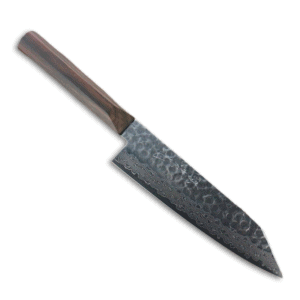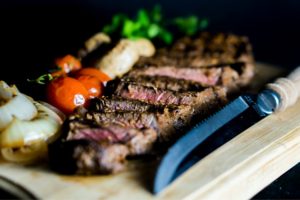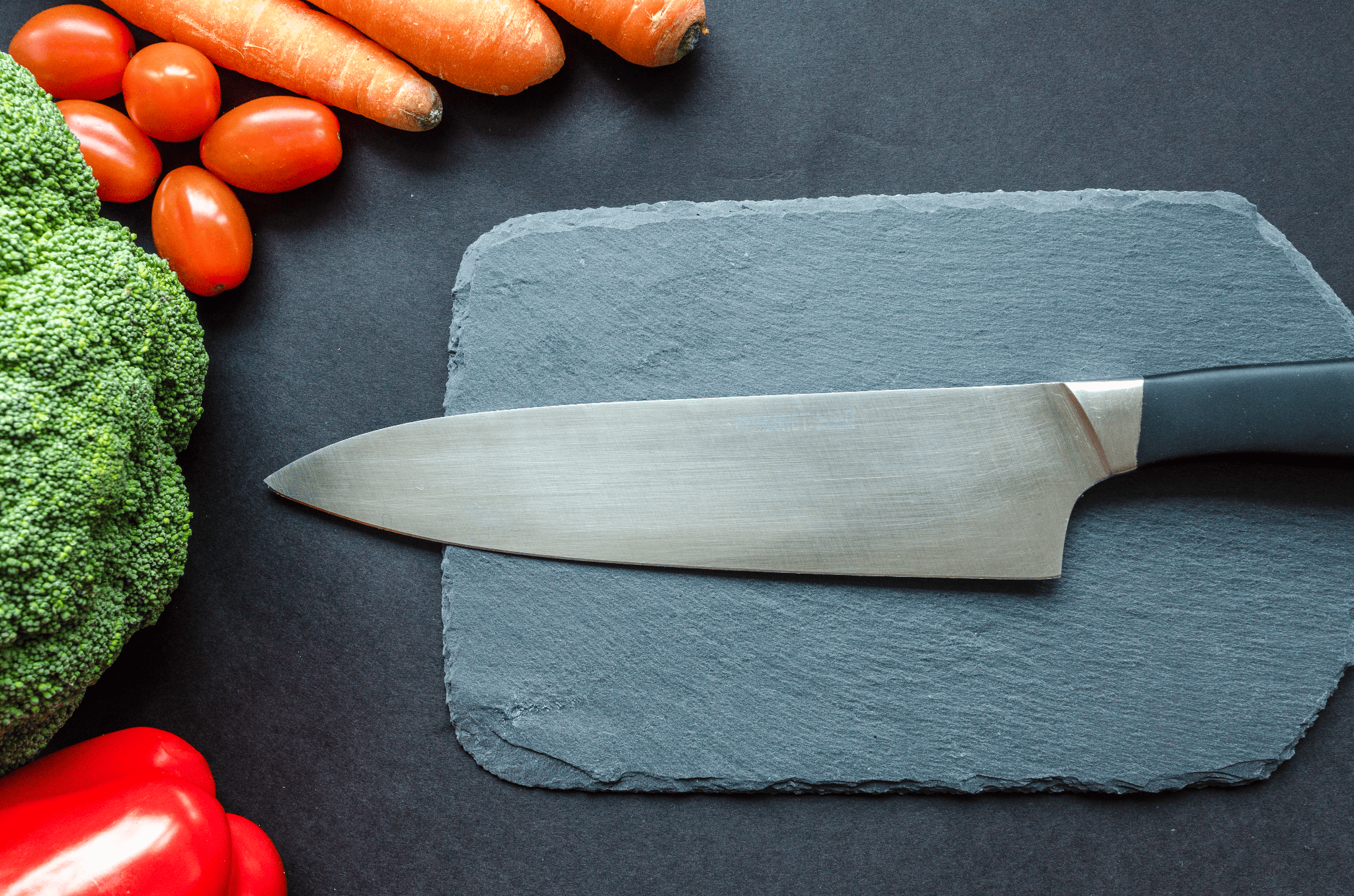When it comes to knives, professional chefs know what works best for them. There are many different types of knives on the market, and each one has its own unique set of benefits and drawbacks. In this blog article, we’ll look at what knives professional chefs use and why they find them so useful in the kitchen.
8 Knives Used By Professional Chefs
Chef’s Knives

A chef knife is a type of knife used by professional cooks for various food preparation tasks. The most important and frequently used tasks are chopping and slicing vegetables, herbs, meat, and fish.
A chef knife typically has a blade 8-10 inches long and is usually made of high-carbon stainless steel. The most popular type of knife among professional chefs is the chef’s knife. A chef’s knife is a versatile all-purpose knife that can be used for everything from chopping vegetables to slicing meat.
The blade is usually between eight and ten inches long and is made of high-carbon stainless steel. The handle is usually made of wood, plastic, or metal, and the blade is curved to allow for a rocking motion when chopping.
Chef knives are designed to be comfortable to hold and use for extended periods of time, and they typically have a bolster (a thick band of metal near the base of the blade) to protect the user’s hand from slipping onto the sharp edge.
While there are many different types and brands of chef knives available, they all share these basic characteristics. Chef knives are an essential tool for any professional cook, and they can also be very useful for home cooks who do a lot of cooking and food preparation.
Utility Knife
A utility knife is a versatile tool that can be used for a variety of tasks in the kitchen. Also called a serrated knife, this type of knife has a long, narrow blade with sharp teeth that make it ideal for slicing bread and other bakery items.
In addition, utility knives are often used to trim meats and vegetables, making them an essential tool for any chef. While utility knives can be used for a variety of tasks, they are not suitable for cutting through bone or hard root vegetables.
As a result, chefs typically use utility knives in conjunction with other types of knives, such as chef’s knives and paring knives, to create a well-rounded arsenal of tools.
Santoku Knife

The Santoku knife is a multipurpose instrument that may be used for everything from chopping to filleting and is most preferred by many professional chefs. Its sharpness and precision make it ideal for slicing and dicing meats, vegetables, and fruits.
Additionally, the Santoku knife is often used for mincing and chopping herbs and spices. The wide blade also makes it useful for scooping up chopped food and transferring it to a cooking pot or pan.
Overall, the Santoku knife is an essential tool for any chef who wants to create delicious and healthy meals.
You can learn more about Santoku knives, in our comprehensive guide right here.
Boning Knife
A boning knife is a kind of sharp-pointed kitchen knife with a slim blade. It is used to remove the bones from meat, poultry, and fish. A boning knife is different from a filleting knife, which has a thinner blade and is used to remove the skin from fish. The primary thing to look for in a boning knife is a sharp point.
The point should be able to pierce the skin of the meat and reach the bone. The blade should also be thin enough to maneuver around small bones. Many boning knives have flexible blades, which makes them even easier to use.
Boning knives are an essential tool for any professional chef. They are also popular among home cooks who enjoy preparing their own meats and poultry.
Cleaver Knife
Many people might not know what types of knives professional chefs use in their kitchens. The answer is that they use a variety of knives depending on what they are cutting.
One knife that is essential to have in the kitchen is a cleaver knife. A cleaver knife is a large, heavy knife that is perfect for chopping through thick cuts of meat.
The broad, flat blade also makes it ideal for mincing garlic and ginger. While it can be used for slicing vegetables, the weight and size of the blade make it less than ideal for delicate tasks.
So why do chefs prefer to have a cleaver knife in their kitchen? The answer is simple – because it is an incredibly versatile tool.
Whether you’re chopping through chicken breasts or mincing garlic, a cleaver knife will get the job done quickly and efficiently. So if you’re looking for a knife that can do it all, a cleaver is the way to go.
Bread Knife
When it comes to kitchen knives, bread knives are an essential tool for any chef. This type of knife is designed specifically for slicing bread, and its serrated blade makes it ideal for cutting through crusty loaves.
Bread knives also have a relatively long blade, which gives you more control when slicing. In addition, the serrations on the blade help to prevent the bread from tearing or squishing as you cut.
For these reasons, bread knives are a favorite among professional chefs. Whether you’re slicing a loaf of sourdough or chopping up a baguette, a bread knife is a perfect tool for the job.
Paring Knife
Paring knives are small, general-purpose knives that are typically between two and four inches in length. They have a pointed tip and a relatively short blade, which makes them ideal for peeling and slicing fruits and vegetables.
Paring knives are also great for carrying out delicate tasks like removing the seeds from a bell pepper or shaping ginger into thin slices. While paring knives can be used for a variety of tasks, they’re not well-suited for cutting through bones or thick pieces of meat.
For that reason, professional chefs typically keep a few different types of knives on hand to suit the various tasks they need to perform. Paring knives may not be the most glamorous kitchen tools, but they’re an essential part of any chef’s toolkit.
Steak Knife

Many people think that any kitchen knife can be used to cook steak. However, this is not the case. Steak knives are a specific type of knife that is designed for cutting meat.
The blade of a steak knife is usually shorter and sharper than a traditional kitchen knife. This makes it easier to cut through tough meats without tearing them.
In addition, the handle of a steak knife is often ergonomically designed to provide a comfortable grip. Steak knives also tend to be made from high-quality materials, such as stainless steel or carbon steel.
This ensures that they will remain sharp for years to come. For all these reasons, professional chefs prefer to use steak knives when cooking steak.
Find the Right Knives for Your Kitchen
Now that you know what types of knives professional chefs use, it’s time to find the right ones for your kitchen. When choosing a knife, it’s important to consider what you will be using it for.
If you are planning on doing a lot of cooking, it’s a good idea to invest in a set of high-quality kitchen knives, If you’re looking for the best knives for professional chefs, look no further than Damas Knives. Our knives are made from high-quality materials and are designed to withstand the rigors of professional use.
Whether you’re chopping vegetables or slicing meat, our knives will help you get the job done quickly and efficiently. So if you’re looking for the best knives for professional chefs, Damas is the only place to shop.
However, if you only need a few basic knives, you can save money by buying a cheaper set. No matter what your budget is, there’s a knife out there that’s perfect for you.
Thank you for reading! We hope this article has helped to give you a better understanding of what professional chefs use in their kitchens.



